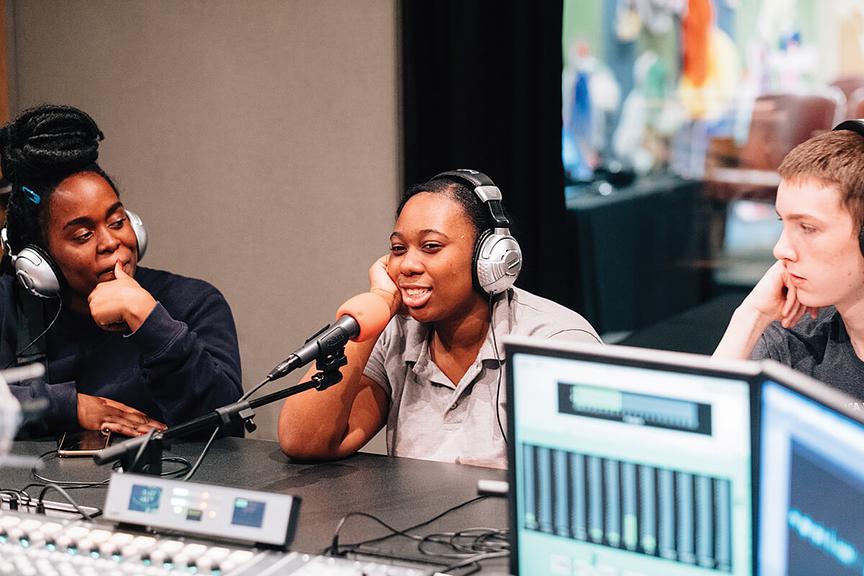Youth are talked about, studied, marketed to, worried over, and blamed for almost everything. They are usually asked for their thoughts only in times of crisis or when there is money to be made from them. Youth Express demonstrates that youth voice matters all of the time.
Youth Express is not simply about creating radio targeted to youth; rather, it focuses on disseminating the voices of youth to new audiences (including adults) while promoting intellectual, creative and professional growth, all in a way that stresses learning -- for media makers and listeners.
Youth Express operates from independent studios in an urban setting on Pittsburgh's Northside and brings together students from different neighborhoods, backgrounds, and school districts as they interact and learn from one another.
Why radio in the age of ubiquitous digital cameras and YouTube? Simply stated, radio is a tremendous equalizer; all can participate regardless of physical capabilities or appearance. Radio stresses the use of fundamental language and communications skills. With the trappings of television lighting, set design, and graphic enhancement removed, radio allows makers – and listeners – the opportunity to use imagination in a provocative way that not only entertains, but also engages and educates. Radio also provides a degree of privacy to the creator that often is impossible with other media. It is the perfect balance -- and also is a cost-effective medium for information gathering, preparation, and dissemination.
Youth Express is the result of a bold initiative to create a 24/7 Internet radio service that delivers essays, poems, theater, music and other original works created by area youth. Making youth expression available and prominent achieves multiple goals:
- Participating youth sharpen skills (e.g., interviewing, writing, speaking, persuasiveness, editing, teamwork, deadline compliance) that support academic standards, 21st century skills and college/workforce readiness.
- Providing a distribution method and audience for student work helps all students aspire to share thoughts and ideas, write clearly and become more engaged with their community.
- Showcasing youth voice helps (1) eliminate preconceived notions about neighborhoods, ethnic or racial background, and other factors, (2) improve overall understanding and empathy for people whose situations are different than their own, and (3) inform other generations about youth-centric issues.
- Use of radio is economical, ensures privacy, simplifies acquisition/delivery, and embraces the growing market for content for smartphones, podcasts and Internet-equipped car radios.
While some Youth Express students have gone on to journalism or broadcasting careers, Youth Express is not a career training program. Rather, it is a platform that recognizes that all youth have an authentic voice that warrants dissemination.
Finally, in a time when civil dialogue and cultural understanding may be at an all-time low, Youth Express builds connections and empathy. Our platform welcomes and blends audio created by students from urban, rural and suburban schools. We also host meetups and special programs to encourage cross-school collaboration. Students and listeners alike have told us that they have experienced increased empathy and understanding when they hear authentic audio from real youth, often hearing someone from a different neighborhood or background for the first time. Educators have used specific Youth Express audio for professional development.

